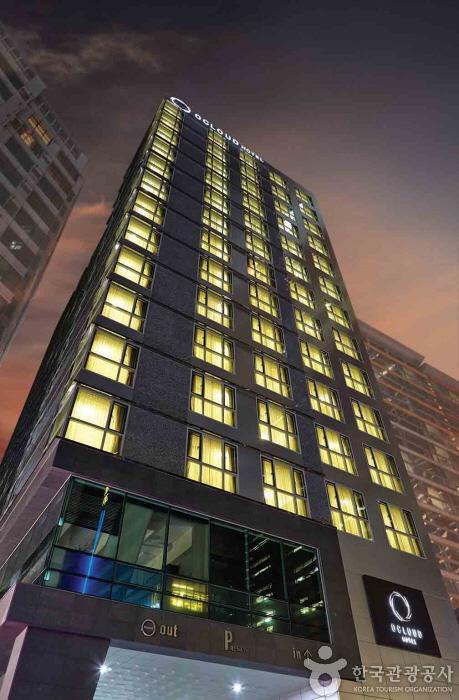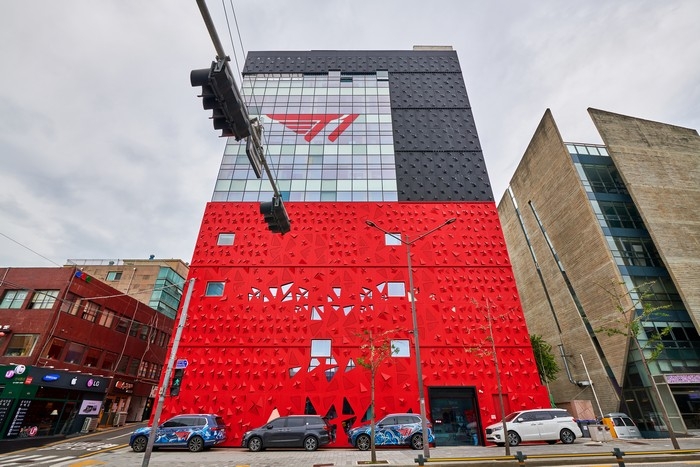Wonder Place - Suyu Branch [Tax Refund Shop] (원더플레이스 수유)
8.2Km 2024-04-22
308, Dobong-ro, Gangbuk-gu, Seoul
-
Ocloud Hotel (오클라우드호텔)
8.2Km 2024-12-13
12 , Sapyeong-daero 58-gil, Seocho-gu, Seoul
+82-2-3480-8640
Ocloud Hotel is a 4-star business hotel located at the heart of Gangnam, Seoul, making it an ideal place to stay for business travelers. The hotel offers various room types, including Standard, Deluxe, Family, and Suite, all of which are modern, clean and sure to leave guests satisfied. Each room is equipped with a microwave, wine glasses, and an iron. There is a restaurant that serves meals at a reasonable price on the B1 floor. A fitness center and laundry room are located on the 2nd floor, and from the rooftop garden you can enjoy a night view of downtown Seoul. Business rooms are also available.
Olive Young - Eonju Station Branch [Tax Refund Shop] (올리브영 언주역)
8.2Km 2024-04-18
209, Bongeunsa-ro, Gangnam-gu, Seoul
-
Central Pharmacy [Tax Refund Shop] (센트럴약국)
8.2Km 2024-04-16
F1 (Nonhyeon-dong), 211, Bongeunsa-ro, Gangnam-gu, Seoul
-
Seorae Village (서래마을)
8.2Km 2022-12-16
Banpo-dong, Seocho-gu, Seoul
+82-2-2155-6220
Seorae Village is located in between Banpo 4-dong and Bangbaebon-dong in Seocho-gu, Seoul. Seorae Village took its form as a French neighborhood when French residents moved to the area after Ecole Francaise de Seoul, a school for French residents in Korea, was established here in 1985. According to 2008 census, about half of the total 1,000 French citizens residing in Korea were registered to be living in Seorae Village. The area naturally took shape as a global neighborhood as many international residents settled at Seorae Village much thanks to the strong presence of French residents. In addition to its convenient location near the central district area as well as Gangnam area and Hangang River Park, Seorae Village serves as a pleasant environment space for all.
Many shops and restaurants in Seorae Village are small in size and rather charming, resembling those in Europe. A bakery that makes traditional French baguettes using ingredients directly imported from France can be found here. In recent years, Seorae Village has undergone several changes, gaining much attention as one of the most modern and fanciest regions found in Seoul.
Shinuiju Chapsal Sundae (신의주찹쌀순대)
8.2Km 2025-10-29
725 Yeongdong-daero, Gangnam-gu, Seoul
SHINee's Key and Minho's Soul Food
It is a Sundae and Rice Soup restaurant that SHINee's Key and Minho have chosen as the soul food that they used to eat after their schedules since their trainee days. Rice Soup can be enjoyed white with only salted shrimp in the soup, or it is delicious with minced seasoning. The bowl will be empty in no time when eaten with Julienne Radish Fresh Salad to a plain soup without the smell of pork. The Stuffed Squid that Key ordered is also a delicacy.
T1 (T1)
8.2Km 2025-11-05
627 Seolleung-ro, Gangnam-gu, Seoul
Perfect place for T1 fans
It is a space and goods shop for fans of the LoL pro game team T1 who enjoy e-sports. A life-sized figure of the legendary pro gamer Faker is at the entrance, and trophies won in previous LoL-related competitions are on display. It is a place where you can enjoy T1 up close by engraving your name on the same uniform as the players.
Sangam-dong MBC New Headquarters Media Center (상암동MBC신사옥미디어센터)
8.2Km 2025-11-05
255 Seongam-ro, Mapo-gu, Seoul
Maehwa Banjeom (매화반점)
8.3Km 2024-03-19
96 Dongil-ro 18-gil, Gwangjin-gu, Seoul
+82-2-498-1939
Maehwa Banjeom offers a fusion of Lamb skewers, lamb chops, and traditional Chinese cuisine. Fresh vegetables and sauces are used daily to prepare dishes upon order. While yangkkochi (lamb skewers) and guobaorou (sweet and sour pork in sweet rice batter) are signature dishes, gaji bokkeum (stir-fried eggplant) and cream saeu (shrimp with cream sauce) are also popular choices. Located within the alley of Lamb Skewers Street, just 300 meters from Exit 5 of Konkuk University Station.
Sejong University Museum (세종대학교 박물관)
8.3Km 2022-09-16
209, Neungdong-ro, Gwangjin-gu, Seoul
+82-2-3408-3876
Sejong University Museum exhibits folk art, wooden crafts, clothing, accessories, pottery, paintings and calligraphy collected for over 40 years by the couple who founded the present day Sejong University, Dr. Ju Young-ha and Dr. Choi Ok-ja. This museum has its origins in the Soodo Gallery, which was built in Chungmuro, the campus’ original location, in 1959. Needing more space to house additional artifacts, the museum moved to its current location, which first opened on May 5, 1973 in a four-story concrete building inspired by traditonal tower design from the Baekje era. This building was later expanded on May 20, 1977.
After the university’s name was changed to Sejong University in 1979, the museum was also renamed the Sejong University Museum. The museum showcases unique artifacts to both scholars and students from home and abroad in contribution to the research of Korea’s culture, arts, and archeology.


![Olive Young - Eonju Station Branch [Tax Refund Shop] (올리브영 언주역)](http://tong.visitkorea.or.kr/cms/resource/12/2889112_image2_1.jpg)
![Central Pharmacy [Tax Refund Shop] (센트럴약국)](http://tong.visitkorea.or.kr/cms/resource/64/2887964_image2_1.jpg)




 English
English
 한국어
한국어 日本語
日本語 中文(简体)
中文(简体) Deutsch
Deutsch Français
Français Español
Español Русский
Русский